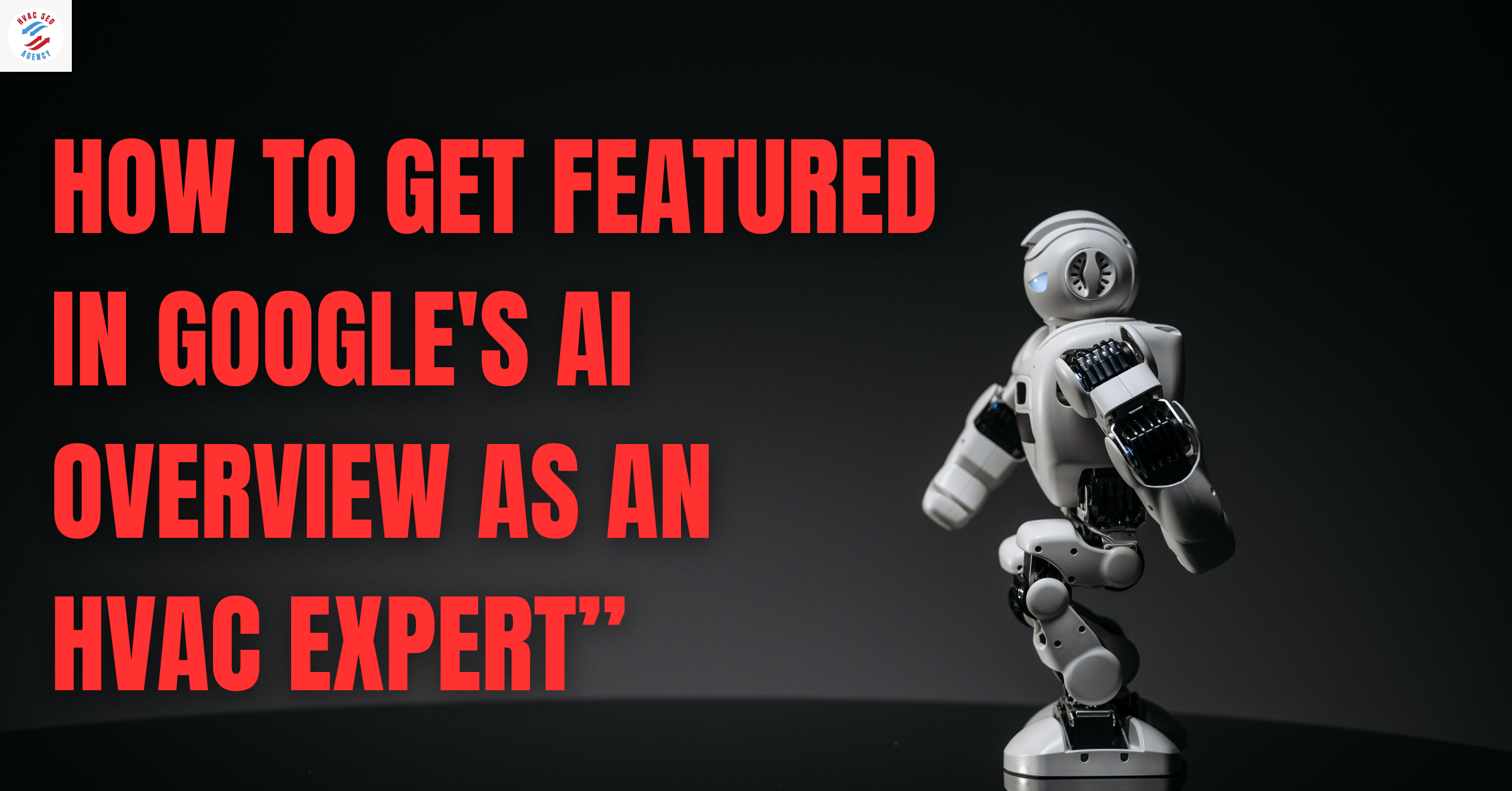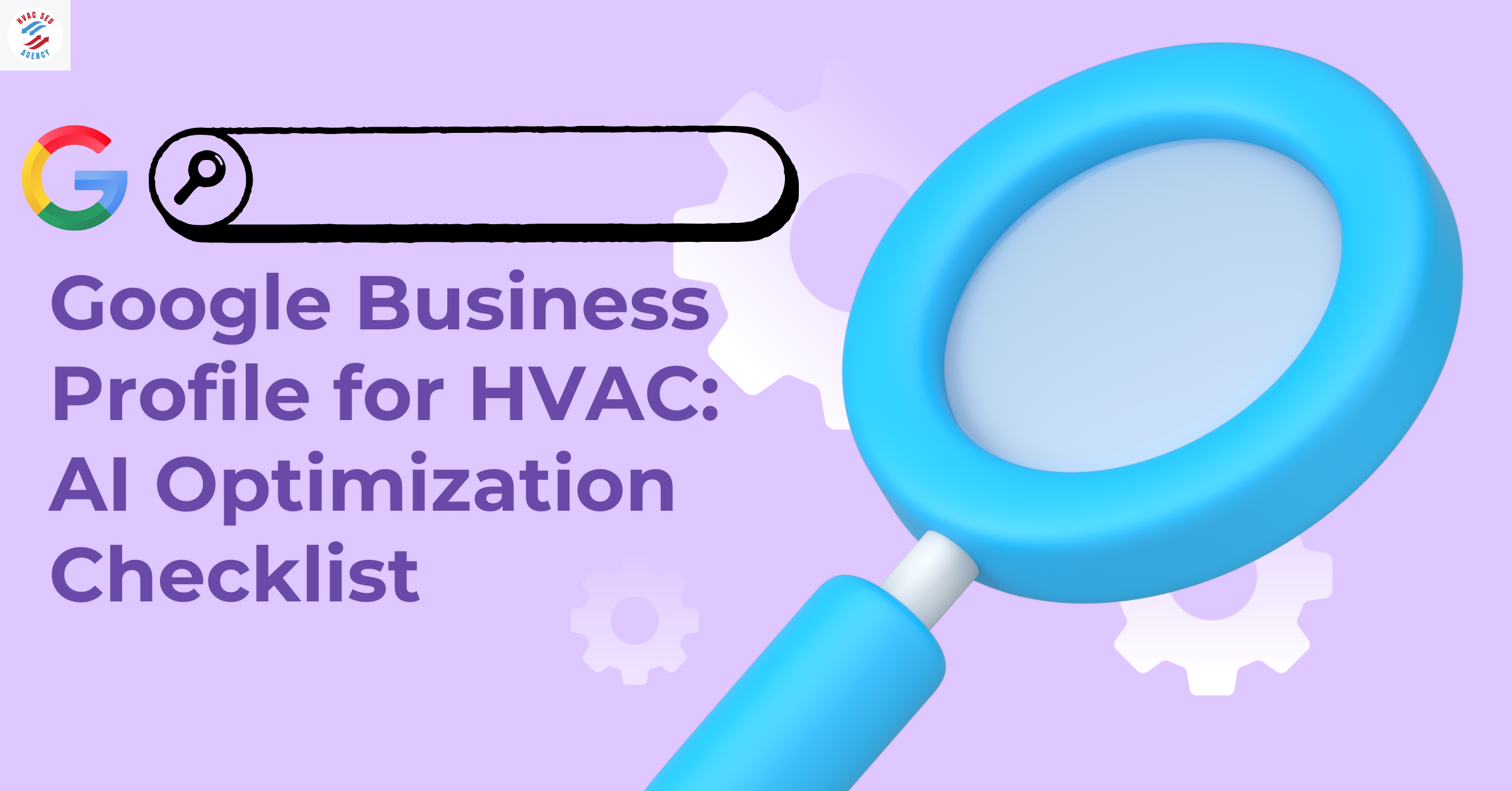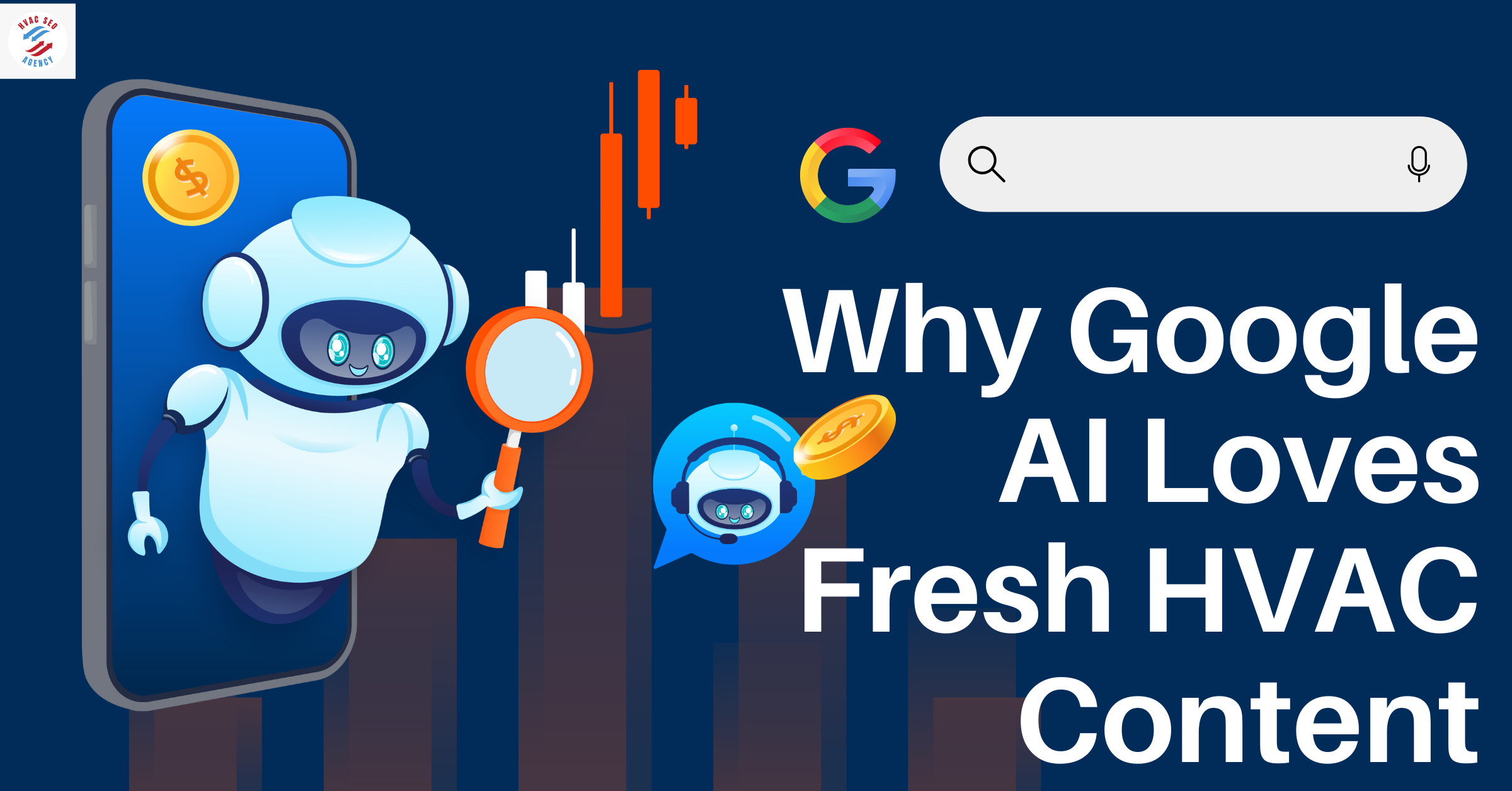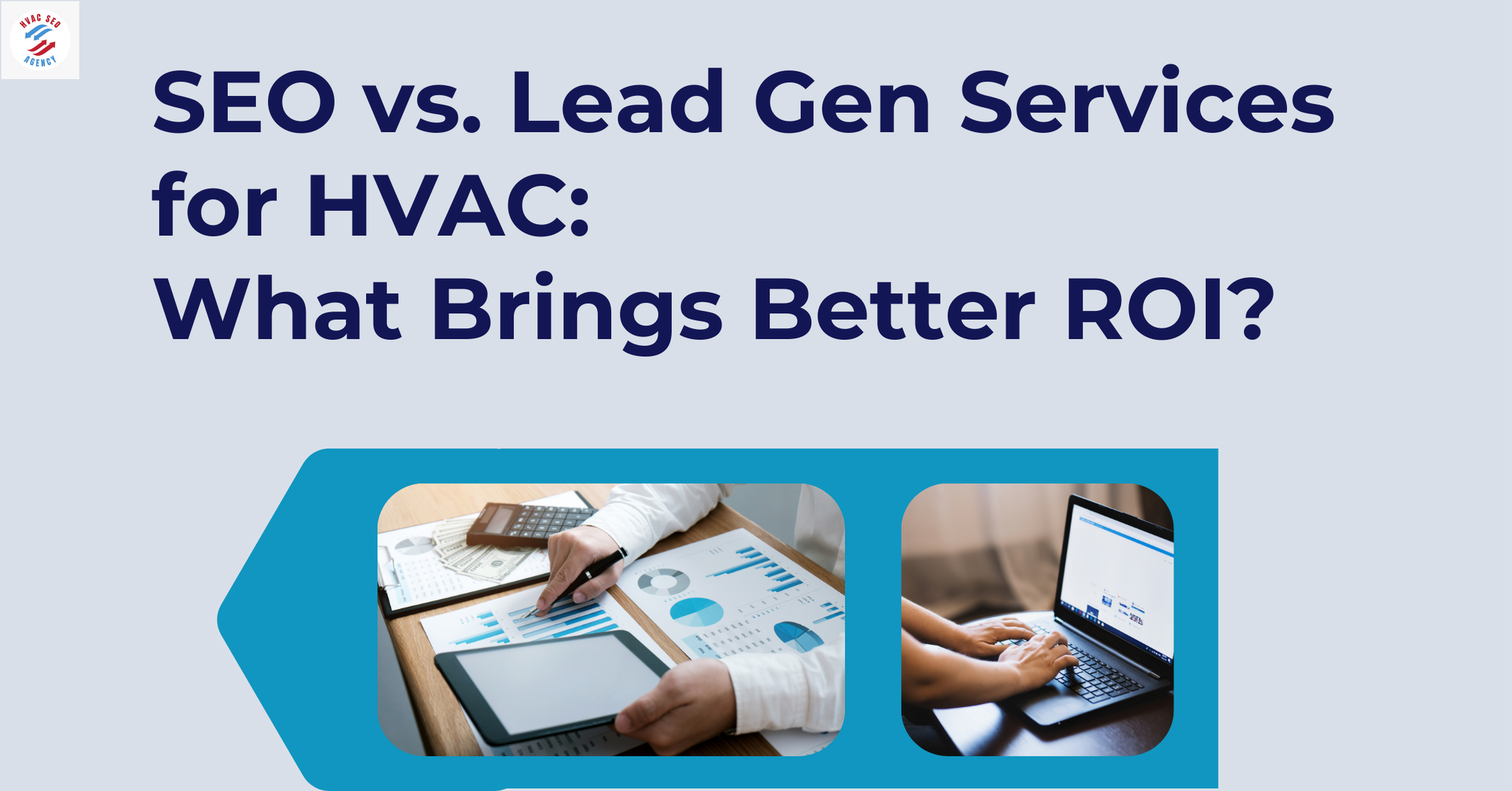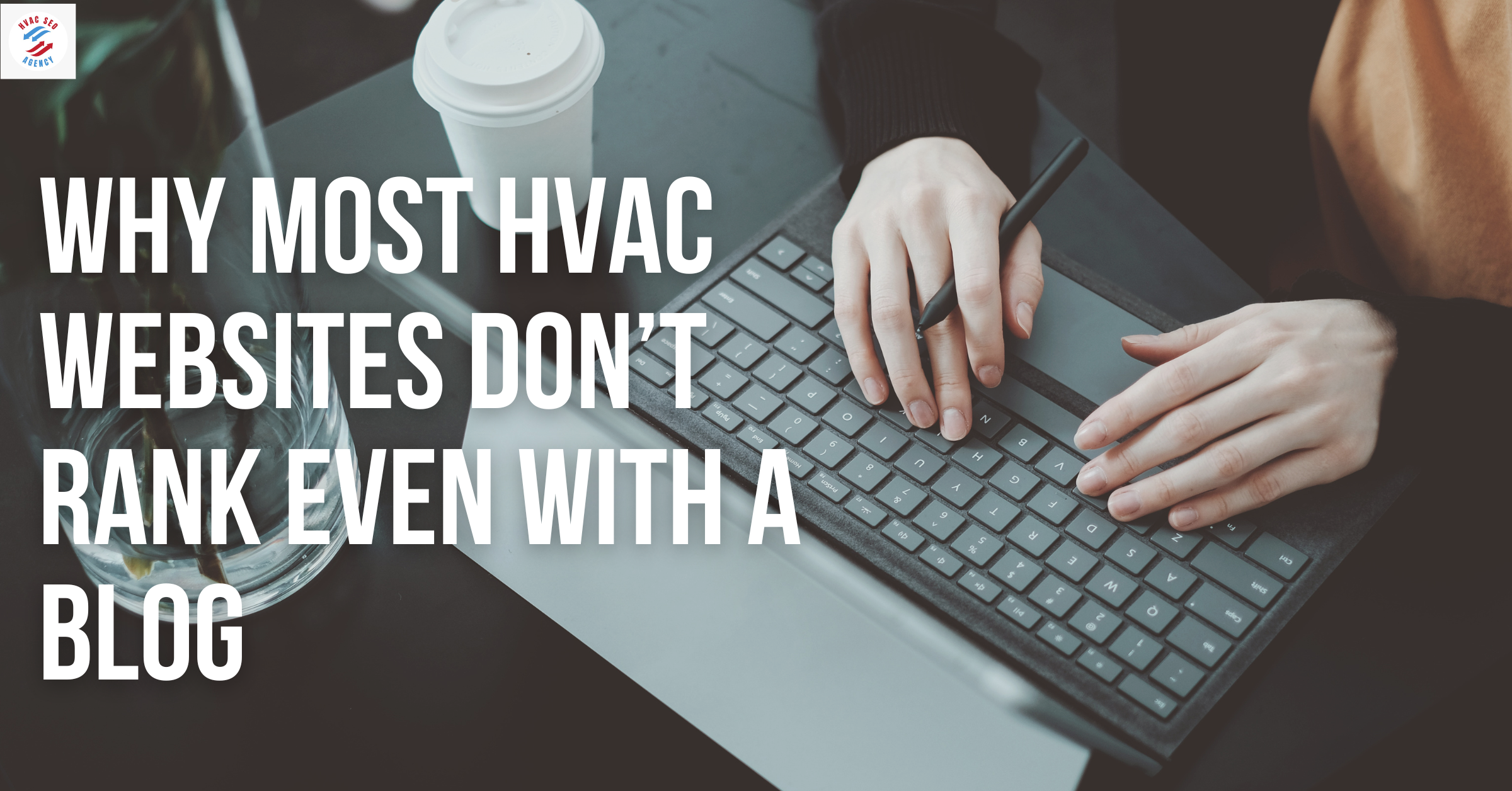The Importance of HVAC System Commissioning: A Step-by-Step Guide

1. HVAC System Commissioning
Heating, Ventilation, and Air Conditioning (HVAC) system commissioning is a comprehensive quality assurance process that ensures HVAC systems are designed, installed, and functioning according to the owner's requirements and design specifications. This process is essential for achieving optimal performance, energy efficiency, and occupant comfort in both new and existing buildings. Partnering with the best HVAC SEO agency helps HVAC businesses showcase their expertise in commissioning services, attract more qualified leads, and dominate local search rankings, ensuring they reach customers in need of high-quality HVAC solutions.
Definition and Purpose of HVAC System Commissioning
Commissioning is a systematic process that verifies and documents that building systems perform according to the intended design and operational needs. It encompasses all phases of a project—from initial design through construction to occupancy and operation. The primary goal is to ensure that the HVAC system operates efficiently, meets the owner's expectations, and provides a comfortable indoor environment.
Distinction Between Commissioning, Retro-Commissioning, and Re-Commissioning
Commissioning (Cx): Applied to new constructions or installations, commissioning ensures that the HVAC system is designed, installed, and tested to meet the owner's project requirements from the outset.
Retro-Commissioning (RCx): This process is performed on existing buildings that have never been commissioned. It aims to improve the operation and maintenance of HVAC systems, enhancing energy efficiency and indoor air quality.
Re-Commissioning: Conducted on buildings that were previously commissioned, re-commissioning ensures that HVAC systems continue to operate optimally over time, especially after renovations or changes in building usage.
Benefits of Commissioning
Improved System Performance: Commissioning identifies and corrects design flaws, installation errors, and operational inefficiencies, leading to optimal HVAC system performance.
Energy Savings: Properly commissioned systems operate more efficiently, reducing energy consumption and lowering utility costs. For instance, commissioning can lead to a median energy savings of 13% in new construction projects.
Enhanced Indoor Air Quality: By ensuring correct ventilation and filtration, commissioning contributes to healthier indoor environments.
Extended Equipment Lifespan: Addressing potential issues early prevents excessive wear and tear, prolonging the life of HVAC equipment.
Compliance with Standards: Commissioning helps in meeting industry standards and regulations, ensuring that HVAC systems adhere to required guidelines.
Table: Comparison of Commissioning Types
Graph: Energy Savings from Commissioning
A bar graph illustrating energy savings percentages across different commissioning types, highlighting the significant impact of commissioning on energy efficiency.
2. The HVAC Startup Checklist
Implementing a comprehensive HVAC startup checklist is crucial during the commissioning process to ensure that all components function correctly and efficiently. This systematic approach helps identify potential issues early, ensuring optimal performance and longevity of the HVAC system.
Importance of an HVAC Startup Checklist in the Commissioning Process
An HVAC startup checklist serves as a standardized protocol to verify that every aspect of the system is inspected and tested before it becomes operational. This meticulous process ensures that the installation aligns with design specifications and operates safely and efficiently. By adhering to a startup checklist, technicians can systematically address potential problems, reducing the likelihood of future system failures and costly repairs.
Key Components of the Checklist
Pre-Startup Inspections:
Visual Inspection:
Ensure equipment is installed per manufacturer specifications, with correct placement and secure mounting.
Verify there is no physical damage, such as bent fins or broken parts.
Check for debris, dust, or obstructions in and around the unit.
Refrigerant System:
Confirm refrigerant lines are properly insulated and free from leaks.
Ensure the system is charged with the correct type and amount of refrigerant.
Electrical Connections:
Verify that the power supply matches equipment voltage requirements.
Check all wiring connections for tightness and correct polarity.
Inspect and tighten terminal block connections.
Operational Performance Tests:
Thermostat Setup:
Set the thermostat to manufacturer-recommended settings.
Test thermostat operation by changing settings (heat/cool, fan modes).
Electrical Startup:
Turn on the main power and monitor the startup sequence.
Observe electrical current draw during startup and running conditions.
Airflow and Ductwork:
Ensure all supply and return vents are open and free of blockages.
Inspect ductwork for leaks or damage.
Measure and adjust static pressure in the system.
Safety Checks:
System Operational Check:
Activate heating and cooling modes to confirm proper operation.
Verify proper ignition sequence and burner operation in heating mode.
Measure temperature differences across heat exchangers and evaporator coils.
Safety and Control Checks:
Test the operation of all safety controls, such as limit switches and pressure switches.
Verify control board status and troubleshoot any error codes displayed.
Ensure condensate drain lines are clear and draining properly.
Documentation and Reporting:
Record all measurements, observations, and any corrective actions taken during the startup process.
Provide a detailed report to the building owner or maintenance team for future reference.
Sample HVAC Startup Checklist
Below is a sample HVAC startup checklist outlining essential tasks and descriptions:
Implementing a thorough HVAC startup checklist is a vital step in the commissioning process, ensuring that all system components are functioning correctly and efficiently. This proactive approach not only enhances system performance but also extends the lifespan of the equipment, leading to increased energy efficiency and occupant comfort.
3. Step-by-Step Guide to HVAC System Commissioning
A systematic approach to HVAC system commissioning ensures that all components function optimally, leading to enhanced performance, energy efficiency, and occupant comfort. The commissioning process encompasses several key phases:
Accurate HVAC load calculations are essential for designing efficient heating and cooling systems, using advanced tools and techniques to ensure optimal energy performance and indoor comfort.
1. Planning Phase
Establishing Commissioning Objectives:
Define clear goals for the commissioning process, focusing on system performance, energy efficiency, indoor air quality, and compliance with relevant standards.
Assembling the Commissioning Team:
Form a multidisciplinary team comprising the building owner, design engineers, contractors, facility managers, and commissioning agents to ensure comprehensive oversight.
2. Design Phase
Reviewing Design Documents:
Conduct thorough evaluations of design specifications, drawings, and equipment selections to confirm alignment with the owner's project requirements.
Incorporating Commissioning Requirements:
Integrate specific commissioning criteria into the design documents, outlining performance metrics, testing protocols, and documentation standards.
3. Construction Phase
Verifying Equipment Installation:
Inspect the installation of HVAC components to ensure adherence to design specifications and manufacturer guidelines.
Functional Performance Testing:
Execute tests to validate that each system operates according to the intended design and performance criteria.
4. Acceptance Phase
Addressing Deficiencies:
Identify and rectify any issues uncovered during testing to ensure the system meets all specified requirements.
Finalizing Documentation:
Compile comprehensive records of the commissioning process, including test results, equipment manuals, and as-built drawings.
5. Post-Acceptance Phase
Training Operations Staff:
Provide detailed training to facility personnel on system operation, maintenance procedures, and troubleshooting techniques.
Ongoing Performance Monitoring:
Implement strategies for continuous monitoring and periodic re-commissioning to maintain optimal system performance over time.
Graph: HVAC Commissioning Process Flowchart
A flowchart illustrating the sequential stages of the HVAC commissioning process, from planning through post-acceptance, highlighting key activities and decision points.
4. Common Issues Identified During HVAC System Commissioning
HVAC system commissioning plays a critical role in identifying and resolving performance issues that can impact system efficiency, indoor comfort, and energy consumption. Below are the most common problems discovered during the commissioning process:
1. Design Flaws
Undersized or Oversized Equipment: Improperly sized HVAC systems lead to inefficient operation, increased energy costs, and poor indoor climate control.
Inadequate Duct Design: Poorly designed duct systems cause airflow restrictions, pressure imbalances, and inefficient cooling/heating distribution.
Insufficient Ventilation Planning: Lack of proper fresh air intake can compromise indoor air quality (IAQ) and building comfort levels.
2. Installation Errors
Incorrect Refrigerant Charge: Studies show that nearly 60% of HVAC systems have improper refrigerant levels, leading to reduced efficiency and premature equipment failure.
Poor Electrical Wiring: Loose or improper connections can cause voltage fluctuations, overheating, and even safety hazards.
Improper Sensor Placement: Thermostats and sensors placed in incorrect locations can result in inaccurate temperature readings and uneven cooling or heating.
3. Calibration Issues
Unbalanced Airflows: HVAC systems often require air balancing to distribute conditioned air evenly throughout the building.
Faulty Controls and Automation: Malfunctioning or poorly programmed thermostats and building automation systems (BAS) can lead to erratic system performance.
Improper Pressure Settings: Incorrect pressure adjustments can lead to excessive energy use and decreased system lifespan.
4. Energy Inefficiencies
Excessive Energy Consumption: Commissioning identifies inefficiencies that can increase energy costs by 10-30% due to issues such as improper damper settings, leaking ducts, or overworked compressors.
Inconsistent Heating and Cooling: Systems that fail to maintain consistent temperatures may result from uncalibrated thermostats or improper airflow.
Statistical Insights on HVAC System Issues
Graph: Energy Loss Due to Common HVAC Issues
A bar chart illustrating energy losses associated with improper refrigerant charge, air leaks, and unbalanced airflow.
5. The Economic Impact of HVAC Commissioning
HVAC system commissioning is not just about optimizing performance; it also delivers significant financial benefits. Properly commissioned systems result in lower energy costs, reduced maintenance expenses, and extended equipment lifespan. This section explores the economic advantages of HVAC commissioning with data-backed insights.
HVAC financing allows homeowners and businesses to install or upgrade HVAC systems with flexible payment plans, making essential heating and cooling solutions more affordable without large upfront costs.
Managing cash flow in your HVAC business is critical for long-term success, requiring strategic budgeting, expense tracking, and revenue forecasting to maintain financial stability and growth.
1. Cost-Benefit Analysis of Commissioning
Upfront Commissioning Costs: Initial commissioning typically costs 0.5% to 1.5% of total construction costs for new buildings and 2% to 16% of annual energy costs for existing buildings.
Energy Savings: On average, commissioning leads to a 13% median energy savings in new construction and 16% savings in existing buildings.
Reduction in Maintenance Costs: Proper commissioning reduces HVAC system failures and lowers long-term maintenance expenses.
2. Return on Investment (ROI) Considerations
Payback Period: The average payback time for commissioning is 4.2 years for new buildings and 1.1 years for existing buildings.
Energy Cost Reductions: Commissioned buildings have been shown to reduce total energy costs by 8-20%, depending on the complexity of the system.
Operational Efficiency Gains: Well-commissioned HVAC systems require fewer repairs, reducing operational costs over the long term.
Table: Commissioning Costs vs. Energy Savings
Graph: Energy Savings from Commissioning
A line graph illustrating the increase in energy savings and decrease in operational costs over time due to commissioning.
3. Financial Benefits Beyond Energy Savings
Increased Property Value: Buildings with well-commissioned HVAC systems have higher market value due to lower operating costs and improved indoor comfort.
Incentives and Rebates: Many utility companies and government programs offer financial incentives for commissioning efforts, further enhancing ROI.
Compliance with Regulations: Proper commissioning ensures compliance with ASHRAE, LEED, and other industry standards, reducing the risk of penalties.
6. Enhancing HVAC Business Growth Through SEO
In today’s digital-driven market, HVAC companies must leverage SEO (Search Engine Optimization) to attract customers and generate leads. A well-optimized online presence helps HVAC businesses rank higher in search results, increasing visibility, website traffic, and ultimately, revenue. This section explores how HVAC SEO in Dallas and SEO for HVAC Companies in San Diego contribute to business success.
Turning HVAC website visitors into paying customers requires a strategic combination of SEO optimization, user-friendly website design, and effective lead generation tactics to convert clicks into bookings.
1. Role of Digital Marketing in the HVAC Industry
The Shift to Online Search:
87% of consumers now conduct online research before making a service decision.
46% of all Google searches seek local business information.
Without SEO, HVAC companies miss out on potential leads from people actively searching for their services.
Why SEO Matters for HVAC Companies:
Helps businesses rank higher on Google when customers search for “HVAC repair near me” or “HVAC installation in [City].”
Drives organic (free) traffic to HVAC websites instead of relying solely on paid ads.
Builds credibility and trust, as people tend to click on top-ranking businesses.
2. Importance of HVAC SEO in [City] for Local Visibility
Google My Business (GMB) Optimization:
92% of consumers pick businesses on the first page of local search results.
Optimizing Google My Business ensures your company appears in the local 3-pack on Google Maps, increasing clicks and calls.
Local Keyword Targeting:
Ranking for city-specific keywords like "HVAC repair in [City]" or "best HVAC installation in [City]" increases local customer engagement.
Customer Reviews and Reputation Management:
Online reviews influence 88% of consumers before making a decision.
Encouraging satisfied customers to leave positive reviews boosts rankings and trustworthiness.
3. Strategies for Effective SEO for HVAC Companies in City
Content Marketing for HVAC SEO:
Businesses that publish blogs get 67% more leads than those that don’t.
Writing local HVAC guides, troubleshooting tips, and energy-saving tips attracts potential customers.
4. Statistical Insight on SEO Benefits for HVAC Companies
Graph: Increase in Leads After SEO Implementation
A bar chart showing how different SEO strategies lead to increased leads and revenue for HVAC businesses.
7. The Role of an HVAC SEO Agency in Lead Generation and Revenue Growth
A well-executed SEO strategy can significantly increase leads and revenue for HVAC businesses. However, managing HVAC SEO in Chicago and SEO for HVAC Companies in Milwaukee requires expertise. This is where an HVAC SEO agency plays a crucial role. By leveraging digital marketing, SEO specialists help HVAC businesses attract more customers and stay ahead of competitors.
1. Benefits of Partnering with an HVAC SEO Agency
Expertise in HVAC Industry SEO
HVAC SEO agencies understand industry-specific challenges and customer search behaviors.
They optimize for local search, voice search, and mobile-friendly content to maximize visibility.
Higher Search Rankings & More Website Traffic
90% of searchers click on first-page results—a professional SEO agency ensures HVAC businesses reach top rankings.
Optimized content increases organic traffic, reducing dependence on paid ads.
Better Lead Generation & Conversion Rates
SEO agencies focus on targeting high-intent keywords like “HVAC repair in [City]” to attract ready-to-buy customers.
Optimized landing pages and call-to-action (CTA) strategies increase conversions.
Websites optimized for speed, mobile use, and structured data improve customer experience and trust.
2. Services Offered by an HVAC SEO Agency
Google My Business (GMB) Optimization:
92% of searchers pick businesses in the top 3 Google Map results.
SEO agencies optimize GMB profiles to boost local HVAC service visibility.
3. Case Study: Impact of SEO on HVAC Lead Generation
Company: [HVAC Company Name] in [City]
Problem: Low online visibility and inconsistent lead generation
SEO Strategy Applied:
Local keyword targeting (“best HVAC repair in [City]”)
Google My Business optimization
Link-building and review management
Content marketing with how-to blogs & service pages
Results After 6 Months:
150% increase in organic traffic
85% boost in leads & service calls
Revenue growth of 40%
Graph: Revenue Growth After Implementing HVAC SEO
A bar chart showcasing revenue increase over six months with professional SEO services.
8. Case Studies: Successful HVAC Commissioning and SEO Implementation
Real-world examples provide insight into the effectiveness of HVAC system commissioning and SEO strategies for business growth. This section highlights two case studies—one focusing on successful HVAC system commissioning and another on how HVAC SEO in [City] improved lead generation and revenue.
Case Study 1: Successful HVAC System Commissioning
Client: Commercial Office Building in [City]
Problem:
HVAC system was inefficient, leading to high energy costs and inconsistent temperature control across floors.
Poor air distribution caused occupant complaints and reduced employee productivity.
Commissioning Process Applied:
System Audit & Diagnostics
Found improper duct balancing and inadequate thermostat calibration.
Equipment Testing & Adjustments
Re-balanced airflow, calibrated thermostats, and corrected sensor placements.
Post-Commissioning Performance Testing
Verified energy efficiency improvements and consistent airflow distribution.
Results:
Energy savings of 18% within 6 months.
25% reduction in maintenance calls for HVAC-related issues.
Increased indoor air comfort, improving occupant satisfaction ratings by 40%.
Table: Before & After HVAC Commissioning
Case Study 2: HVAC SEO Implementation & Business Growth
Client: HVAC Repair & Installation Company in City
Problem:
Business struggled with low online visibility and declining leads due to poor search rankings.
Competitors dominated local searches for “HVAC repair in [City]” and “furnace installation near me”.
SEO Strategy Applied:
Local SEO Optimization
Optimized Google My Business (GMB) profile and acquired customer reviews.
Keyword Targeting & Content Marketing
Created service pages and blog posts targeting HVAC repair in [City] and furnace maintenance tips.
Backlink Building & Technical SEO Fixes
Improved website speed, mobile-friendliness, and internal linking structure.
Results:
Organic traffic increased by 160% in 6 months.
Lead generation improved by 85%, bringing in consistent service calls.
Revenue grew by 42% within a year.
Graph: SEO Impact on Leads & Revenue Over 6 Months
A line graph showing the steady increase in website traffic, service inquiries, and revenue after implementing SEO strategies.
9. Future Trends in HVAC Commissioning and Digital Marketing for HVAC Businesses
The HVAC industry is constantly evolving, with new technologies, energy efficiency initiatives, and digital marketing advancements shaping the future. HVAC companies must adapt to these changes to remain competitive, improve efficiency, and generate more leads.
1. Emerging Trends in HVAC Commissioning
a. Smart HVAC Systems & Automation
IoT-Enabled HVAC Systems:
Smart HVAC systems equipped with IoT (Internet of Things) sensors optimize performance by monitoring temperature, humidity, and energy use in real-time.
Projected market growth: The global smart HVAC market is expected to reach $28 billion by 2028, growing at 9.7% CAGR.
b. AI-Powered Predictive Maintenance
Artificial Intelligence (AI) & Machine Learning allow HVAC systems to predict failures before they happen.
Benefits:
Reduces emergency breakdowns by 30%.
Lowers maintenance costs by 15-25%.
Improves system lifespan by 20%.
c. Energy-Efficient & Sustainable HVAC Technologies
Energy Efficiency Regulations:
ASHRAE & EPA are setting stricter energy efficiency standards, requiring HVAC systems to be more sustainable.
Companies that meet LEED (Leadership in Energy and Environmental Design) certification will have a competitive edge.
Carbon Reduction Initiatives:
Net-Zero Buildings are increasing, requiring commissioning to ensure compliance with energy standards.
2. Future Trends in HVAC SEO & Digital Marketing
a. Voice Search Optimization for HVAC Businesses
By 2025, 50% of all searches will be voice-based.
More customers are searching using smart assistants (e.g., “Hey Google, find HVAC repair near me”).
Voice-optimized content & local SEO will become essential for HVAC businesses to stay competitive.
b. AI & Automation in HVAC SEO
AI tools like ChatGPT, Jasper, and RankBrain are improving how Google ranks HVAC businesses.
Automated local SEO strategies help businesses maintain consistent listings, track customer interactions, and optimize search rankings.
HVAC companies using AI-powered SEO tools see 30% faster growth in search rankings.
c. Video Marketing for HVAC Companies
85% of consumers prefer watching videos over reading text.
HVAC businesses using video marketing see 49% faster revenue growth.
Types of video content that drive HVAC leads:
How-to HVAC maintenance guides
Customer testimonials
Before-and-after HVAC installation videos
Behind-the-scenes of HVAC service calls
Table: Upcoming HVAC Trends & Their Impact
Graph: The Rise of Smart HVAC & Digital Marketing Trends
A bar chart illustrating projected market growth in smart HVAC systems, AI-based maintenance, and digital marketing for HVAC companies.
10.FAQs:
Q1: What is HVAC system commissioning, and why is it important?
HVAC system commissioning is a process that ensures an HVAC system is installed, tested, and operating according to design specifications. It improves energy efficiency, system reliability, and indoor air quality while reducing maintenance costs.
Q2: How much does HVAC commissioning cost, and is it worth it?
Commissioning costs range from 0.5% to 1.5% of total construction costs for new buildings and 2% to 16% of annual energy costs for existing systems. Energy savings of 8-20% and a payback period of 1-4 years make it a cost-effective investment.
Q3: How can SEO help an HVAC business grow?
HVAC SEO increases online visibility, bringing in more website traffic and qualified leads. Companies with strong local SEO appear in Google’s Local 3-Pack, generating 50% more service calls and higher revenue growth.
Q4: What are the best SEO strategies for HVAC companies?
Google My Business optimization for local rankings
Keyword targeting (e.g., “HVAC repair in [City]”)
Fast-loading, mobile-friendly websites
Customer reviews & reputation management
Q5: How long does it take to see results from HVAC SEO?
SEO is a long-term strategy. Most HVAC companies see noticeable improvements within 3-6 months and significant traffic & lead growth in 6-12 months with consistent SEO efforts.
11. Conclusion: The Future of HVAC System Commissioning and Digital Growth
The HVAC industry is evolving, and businesses must adapt to both technological advancements and digital marketing strategies to stay competitive. Proper HVAC system commissioning ensures efficiency, cost savings, and compliance, while SEO-driven marketing helps HVAC companies dominate local search results, attract leads, and increase revenue.


